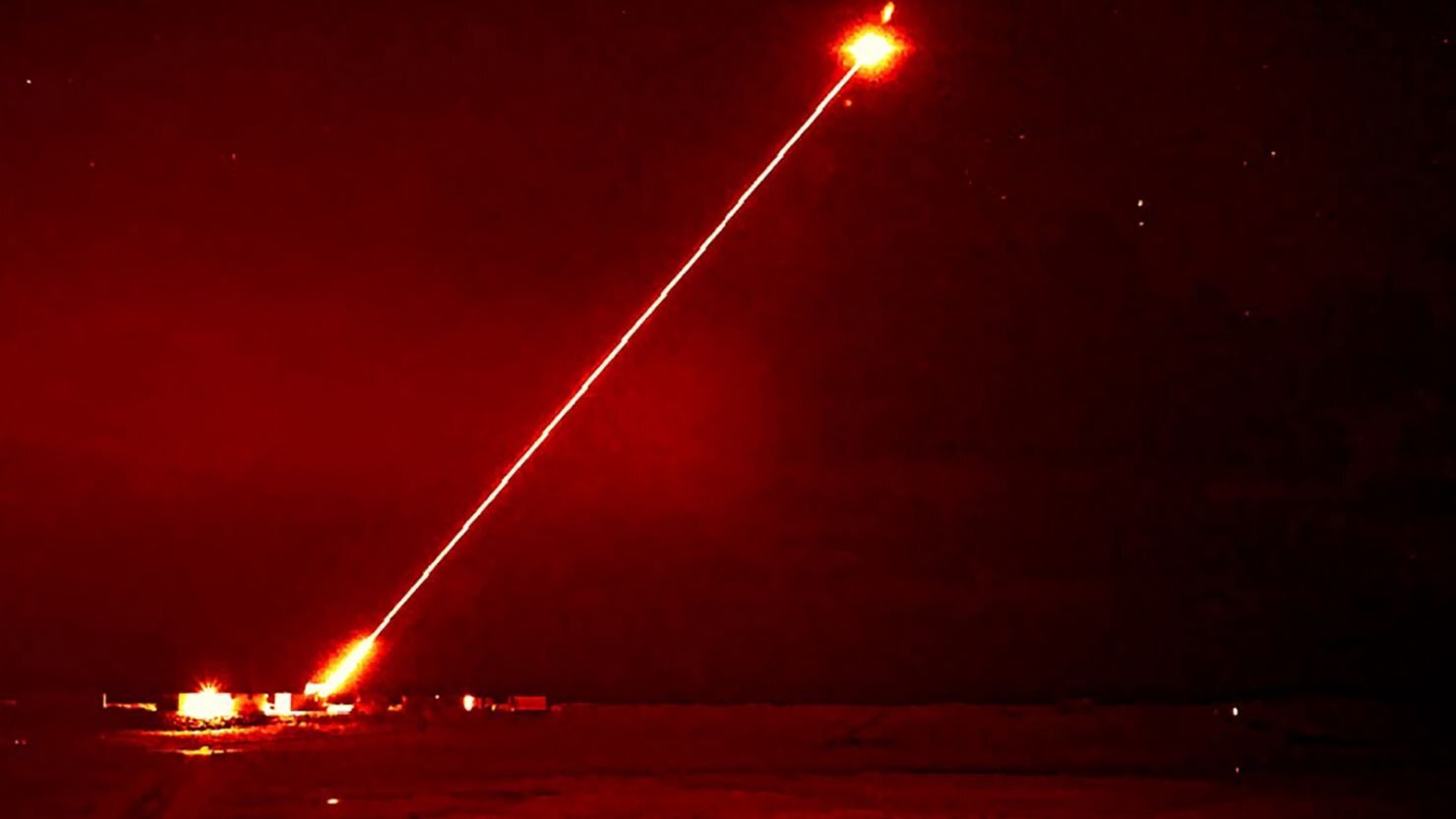The 9 Strangest (and Most Covert) Futuristic Weapons

“`html
Sorry to say, but warfare is about to take a turn reminiscent of Black Mirror. Nations are no longer just hoarding missiles; they are now pouring resources into invisible beams, chilling mind machines, and guns that emit terrifying sounds.
So, forget about traditional ground troops. These are the most bizarre, frightening, and futuristic weapons that are already making their presence felt on the battlefield.
The battleship-mounted laser
Laser blasts have been a staple of sci-fi battles on screen for years. Now, they are making their way into real-world combat, with the British Navy planning to install laser weapons on four of its warships by 2027.
The DragonFire laser system is said to be capable of hitting a £1 coin from a distance of 1km (or a quarter from 0.6 miles) and can take down drones from 5km (3.1 miles) away.
This system generates a high-power laser beam through multiple fibre-optic cables, merging to form a single potent beam that can burn through targets, disable incoming missiles, or detonate explosives.
Not only is it precise and lethal, but it’s also cost-effective.

“If you think you’re going to be attacked by inexpensive precision weapons – unmanned aerial vehicles (UAVs) and the like – there will be a challenge: can they launch more of those at you than you have ammunition to counter?” states Dr Jack McDonald, director of the Centre for Science and Security Studies at King’s College London.
“[With a laser weapon] they can’t simply overwhelm your ammunition supplies.”
Each shot from DragonFire costs less than £10 (around $13), and it’s essentially renewable, according to McDonald. “The crucial aspect is that it uses energy instead of ammunition.”
DragonFire and similar laser systems are intended as short-range defensive tools. For instance, Russia is working on a handheld laser rifle for soldiers to defend against drones.
Lasers also have offensive capabilities, as noted by Dr Sidharth Kaushal, senior research fellow at the Royal United Services Institute, a defense and security think tank.
“One example is how the Chinese employed directed energy weapons against American pilots flying over their base in Djibouti (East Africa). It may not necessarily kill a pilot, but it can dazzle them. In a worst-case scenario, it could potentially blind someone.”
The anti-drone microwave
Directed energy weaponry is one of the most rapidly evolving areas of defense technology, and it extends beyond lasers.
High-power microwave (HPM) weapons are being developed to address the growing threat of drones, especially large swarms of coordinated drones.
HPM weapons have longer wavelengths than lasers and can target multiple threats simultaneously. They utilize a continuously firing beam that is 150,000 times more powerful than the microwave you use to heat your soup.
“Essentially, it’s using radio frequency energy, and it’s primarily designed to destroy the electronics onboard a system,” explains Kaushal.

In 2023, the US military showcased the Tactical High-Power Operational Responder – THOR to allies, and perhaps adversaries too.
This truck-mounted device pivots on a gimbal – a mechanism that allows for easy rotation – directing a broad beam of microwave energy to disable incoming drones. During the 2023 demonstration, multiple drones fell from the sky.
Another technology is a radio wave weapon. In 2024, British soldiers demonstrated a new weapon that utilized radio frequency to disable incoming drones. This system can target drones from a distance of 1km (0.6 miles), with each shot costing just 10p (approximately 13 cents).
Read more:
The artificially intelligent sentinel
Autonomous and artificial intelligence (AI)-powered weapons evoke memories of the hit film Terminator and its T-1000 murderbots that rise against humanity.
It may sound absurd and sci-fi, but AI weapons systems are already being deployed, and some experts express concerns about their evolution.
“The primary risk of autonomous weapons systems is the potential loss of human oversight and unlimited engagement of targets, including civilians,” warns Dr Lukasz Olejnik, an independent researcher and visiting research fellow at King’s College London.
“That’s a no-go zone that would breach Geneva Conventions. The fundamental principles of such technology should uphold the principles of distinction, proportionality, and meaningful human control.
“There’s a risk that a fully autonomous system ‘let loose’ could lead to disasters, such as misidentifying targets, applying excessive force, or limitless lethality.”
Some forms of autonomous weapons have been operational for decades, like the Phalanx Close-In Weapon System (CIWS), which defends British military vessels from targets it identifies itself.

Now, AI is being integrated into battle strategies, surveillance, and more. Various air forces worldwide are developing AI wingman-style UAVs that accompany crewed fighter jets (see below).
There are also AI targeting systems, such as the Bullfrog Gun Turret, an autonomous machine gun station. It employs AI to target, track, and eliminate threats with greater precision against drones than human marksmen.
As with many AI weapon systems, it also features a human-in-the-loop option.
“This means the ultimate decision regarding engagement rests with a human operator,” Olejnik explains. “Manufacturers, users, or strategists may worry, however, whether all parties in a conflict would adhere to such rules.”
The mystery sonic beam weapon
In




